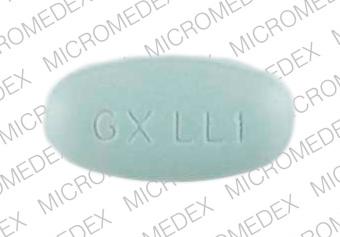Trizivir and Alcohol/Food Interactions
There are 5 alcohol/food/lifestyle interactions with Trizivir (abacavir / lamivudine / zidovudine).
Alcohol (Ethanol) Abacavir
Minor Drug Interaction
Consumption of ethanol during treatment with abacavir results in a decrease in elimination of abacavir due to the inhibition of alcohol dehydrogenase. Coadministration of alcohol 0.7 g/kg (equivalent to 5 drinks) and abacavir resulted in a 41% increase in the area under the time concentration curve and a 26% increase in elimination half life. The clinical significance of this interaction is unknown.
References (1)
- (2001) "Product Information. Ziagen (abacavir)." Glaxo Wellcome
Zidovudine Food/Lifestyle
Minor Food Interaction
Food may have variable effects on the oral bioavailability of zidovudine. Fatty foods have been reported to decrease the rate and extent of zidovudine absorption following oral administration. In a study of 13 AIDS patients, mean peak plasma concentration (Cmax) and area under the concentration-time curve (AUC) of zidovudine were 2.8 and 1.4 times higher, respectively, in fasting patients than in those administered the medication with breakfast. In addition, variations in plasma zidovudine concentrations were increased when administered in the fed state. In another study of eight patients, the time to reach peak concentration (Tmax) was increased from 0.68 to 1.95 hours, and Cmax was reduced by 50% when zidovudine was administered with a liquid high-fat meal relative to fasting. Protein meals can also delay the absorption and reduce the Cmax of zidovudine, although the extent of absorption is not significantly affected. The clinical significance of these alterations, if any, is unknown. The product labeling states that zidovudine may be taken with or without food.
References (4)
- Lotterer E, Ruhnke M, Trautman M, et al. (1991) "Decreased and variable systemic availability of zidovudine in patients with AIDS if administered with a meal." Eur J Clin Pharmacol, 40, p. 305-8
- Unadkat JD, Collier AC, Crosby SS, et al. (1990) "Pharmacokinetics of oral zidovudine (azidothymidine) in patients with AIDS when administered with and without a high-fat meal." AIDS, 4, p. 229-32
- (2001) "Product Information. Retrovir (zidovudine)." Glaxo Wellcome
- Sahai J, Gallicano K, Garber G, et al. (1992) "The effect of a protein meal on zidovudine pharmacokinetics in HIV-infected patients." Br J Clin Pharmacol, 33, p. 657-60
Switch to consumer interaction data
Lamivudine High Cholesterol (Hyperlipoproteinemia, Hypertriglyceridemia, Sitosterolemia)
Major Potential Hazard, Moderate plausibility
NRTIs - pancreatitis
The nucleoside reverse transcriptase inhibitors, didanosine, stavudine, and lamivudine, may cause pancreatitis. The incidence is generally low but is up to 7% with didanosine, and up to 18% in pediatric patients given lamivudine. Patients with a history of or known risk factors for pancreatitis (such as alcohol abuse or hypertriglyceridemia) should be monitored closely during therapy with these agents. Therapy should be discontinued at the first signs/symptoms suggestive of pancreatitis (e.g., nausea, vomiting, abdominal pain, hyperamylasemia with dysglycemia, rising triglycerides, decreasing serum calcium), and preferably permanently discontinued if clinical pancreatitis develops.
References (3)
- (2019) "Product Information. Epivir (lamiVUDine)." ViiV Healthcare, SUPPL-39
- (2018) "Product Information. Videx (didanosine)." Bristol-Myers Squibb, SUPPL-54
- (2018) "Product Information. Zerit (stavudine)." Bristol-Myers Squibb, SUPPL-41
Abacavir High Blood Pressure (Hypertension)
Moderate Potential Hazard, Moderate plausibility
abacavir - cardiovascular disease
Some clinical trials have reported increased risk of myocardial infarction in patients treated with abacavir. Although some of the findings are inconclusive, as a precaution, the underlying risk of coronary heart disease should be assessed before therapy, and action should be taken to minimize all modifiable risk factors such as hypertension, hyperlipidemia, diabetes mellitus, smoking, etc.
References (1)
- (2001) "Product Information. Ziagen (abacavir)." Glaxo Wellcome
Abacavir High Cholesterol (Hyperlipoproteinemia, Hypertriglyceridemia, Sitosterolemia)
Moderate Potential Hazard, Moderate plausibility
abacavir - cardiovascular disease
Some clinical trials have reported increased risk of myocardial infarction in patients treated with abacavir. Although some of the findings are inconclusive, as a precaution, the underlying risk of coronary heart disease should be assessed before therapy, and action should be taken to minimize all modifiable risk factors such as hypertension, hyperlipidemia, diabetes mellitus, smoking, etc.
References (1)
- (2001) "Product Information. Ziagen (abacavir)." Glaxo Wellcome
Switch to consumer interaction data
Trizivir drug interactions
There are 400 drug interactions with Trizivir (abacavir / lamivudine / zidovudine).
Trizivir disease interactions
There are 7 disease interactions with Trizivir (abacavir / lamivudine / zidovudine) which include:
- bone marrow suppression
- myopathy
- hepatitis B
- hepatotoxicity
- pancreatitis
- cardiovascular disease
- renal dysfunction
More about Trizivir (abacavir / lamivudine / zidovudine)
- Trizivir consumer information
- Check interactions
- Compare alternatives
- Reviews (1)
- Drug images
- Side effects
- Dosage information
- During pregnancy
- Generic availability
- Drug class: antiviral combinations
- En español
Related treatment guides
Drug Interaction Classification
| Highly clinically significant. Avoid combinations; the risk of the interaction outweighs the benefit. | |
| Moderately clinically significant. Usually avoid combinations; use it only under special circumstances. | |
| Minimally clinically significant. Minimize risk; assess risk and consider an alternative drug, take steps to circumvent the interaction risk and/or institute a monitoring plan. | |
| No interaction information available. |
See also:
Further information
Always consult your healthcare provider to ensure the information displayed on this page applies to your personal circumstances.


